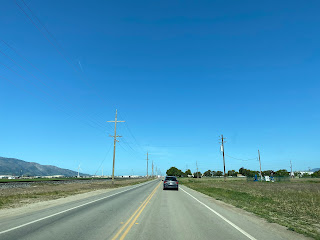Gonzales is a city located in Salinas Valley of Monterey County, California. Modern US Route 101 is aligned around Gonzales via a freeway bypass which swings east of downtown. The original alignment of US Route 101 in Gozales was aligned directly through the community on Alta Street. Above the cover photo of this blog is a view on former US Route 101 in Gonzales on Alta Street. Below Gonzales can be seen along US Route 101 on the 1935 Division of Highways Map of Monterey County.
Part 1; the history of US Route 101 in Gonzales
The lands now occupied by the city of Gonzales was once part of Rancho Rincon de la Puente del Monte. Rancho Rincon de la Puente del Monte was granted to Teodoro Gonzales in 1836 who was then serving as the Alcalde of Monterey. Following the Mexican American War, the Mexican Land Grants were honored by the American government. Ownership of Rancho Rincon de la Puente del Monte thusly remained in the hands of the Gonzales family.
During 1872 Dr. Mariano Gonzales and his brother Alfredo Gonzales granted an easement through their lands to the Southern Pacific Railroad. In 1874 the Gonzales brother would plot a town site along the Southern Pacific Railroad which they named after their family. Gonzales can be seen on the Southern Pacific Railroad on the 1882 Bancroft's Map of California and Nevada.
Salinas Valley was ultimately part of the American El Camino Real which began being signed as an Auto Trail starting in 1906. The era of State Highway Maintenance through Salinas Valley would ultimately begin with the 1909 First State Highway Bond Act which was approved by voters in 1910. One of the highways approved through the 1909 First State Highway Bond Act was a 481.8-mile highway originating at the City Limits of San Francisco which terminated in San Diego. This highway would ultimately come to be known in time as Legislative Route Number 2 ("LRN 2"). Within Salinas Valley much of LRN 2 would follow the existing corridor along the frontage roads of the Southern Pacific Railroad which included the community of Gonzales.
The March 1933 California Highways & Public Works announced reconstruction of US Route 101/LRN 2 from Chualar to Camphora by way of Gonzales was underway. The existing highway is stated to be too narrow and breaking apart too quickly.
The 1935 Division of Highways Map of Monterey County displays US Route 101/LRN 2 aligned through Gonzales along Alta Street.
The November/December 1957 California Highways & Public Works US Route 101/LRN 2 between Soledad and Gonzales was budgeted to be converted to four lane expressway standards.
















































Comments